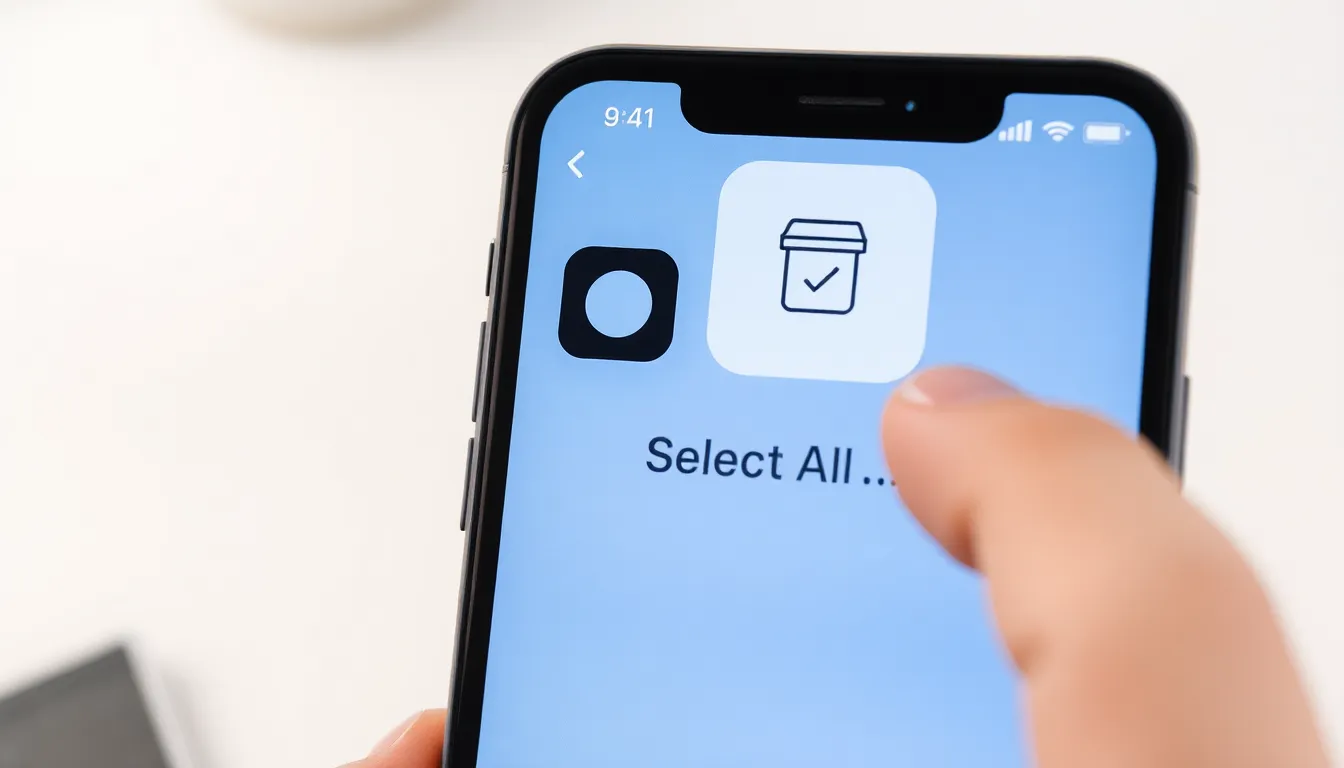Is your iPhone bursting at the seams with a treasure trove of blurry selfies and screenshots of random memes? It’s time to liberate that precious storage space and reclaim your device! Deleting all those photos might feel daunting, but with a little guidance, it can be as easy as swiping right on your favorite dating app.
Table of Contents
ToggleUnderstanding Photo Management on iPhone
Managing photos on an iPhone directly impacts storage efficiency and overall device performance. Regularly evaluating the photo gallery helps free up space and enhance usability.
Importance of Regularly Deleting Photos
Regularly deleting photos prevents unnecessary storage issues. Stale or low-quality images, such as blurry selfies or unwanted screenshots, consume valuable space. Users can prioritize essential memories by removing duplicates or irrelevant photos, making it easier to find important images. Additionally, maintaining a clutter-free gallery simplifies navigation and enhances the overall user experience. A consistent cleanup habit empowers users to stay organized without overwhelming their devices.
Benefits of Keeping Storage Organized
Organized storage enables smoother device performance. An iPhone with ample free space runs apps more efficiently and performs better during updates. Furthermore, freeing storage aids in quicker photo loading times, enhancing access to favorite moments. Users benefit from seamless sync with cloud storage services, ensuring that important photos remain backed up. Clarity in photo management not only serves individual users but also optimizes collaboration opportunities with shared albums and family projects.
How to Delete All Photos Off iPhone

Deleting all photos off an iPhone can free up significant storage space, making it easier to use the device. Follow the methods below for effective photo management.
Using the Photos App
Open the Photos app on the iPhone. Tap “Albums” at the bottom right corner, then select “All Photos.” Press “Select” in the upper right corner, and choose “Select All” to highlight all images. Tap the trash can icon to delete the chosen photos, then confirm the action. Access the “Recently Deleted” album afterward to permanently delete the images and remove them from the device.
Deleting via iCloud
iCloud can streamline the deletion process. On a computer, sign in to the iCloud website and click on “Photos.” Select the photos to delete, then click the trash can icon. For iPhone users, enable iCloud Photos in Settings under the user’s name. Afterward, deleting photos from the iPhone will also remove them from iCloud. Confirm deletion in the “Recently Deleted” album to free up space on both platforms.
Using Third-Party Apps
Several third-party apps can assist in photo deletion. Explore options like Gemini Photos or Photo Cleaner, which help users find and remove duplicate or blurry pictures quickly. Install the selected app and follow the prompts to scan for unwanted images. Upon identifying photos to delete, follow the application guidelines to confirm the removal. This approach offers an efficient way to manage a cluttered photo library.
Backup Options Before Deletion
Backing up photos before deletion is essential. Utilizing reliable methods ensures that important memories remain accessible.
iCloud Backup
iCloud offers a seamless way to back up photos. Users can enable iCloud Photos in their settings, which automatically uploads images to the cloud. This ensures that all photos remain safe, even after deletion from the device. To check storage status, users can visit Settings, tap on their name, then select iCloud. Apple provides 5 GB of free storage, with options to purchase more if needed. This option is advantageous for those with multiple Apple devices, simplifying cross-device access to uploaded photos.
iTunes Backup
iTunes creates a comprehensive backup of an iPhone’s content, including photos. Users can connect their device to a computer and open iTunes to initiate the backup process. The user should select their device icon, then choose “Back Up Now.” This method allows for restoring the device or transferring photos to a different device later. It’s a useful alternative for individuals who prefer local storage over cloud solutions. Regular backups help minimize the risk of data loss during the deletion process.
Troubleshooting Common Issues
Deleting photos from an iPhone can lead to specific challenges. Resolving these issues requires understanding common obstacles users encounter.
Photos Stuck in Recently Deleted
Photos might remain stuck in the Recently Deleted folder, occupying storage space. This folder retains deleted images for 30 days before permanent removal. Users can expedite the process by navigating to the Albums tab in the Photos app. Selecting Recently Deleted allows users to review the folder. From there, tapping “Delete All” will permanently remove the pictures. for immediate space recovery. After confirming deletion, the storage should reflect the updated status. Ensuring regular management of this folder can prevent accumulation of unnecessary files.
Syncing Problems with iCloud
Syncing issues often occur with iCloud, impacting photo deletion efforts. Users must confirm that their iCloud settings are correctly configured. Checking for available storage in iCloud is essential since insufficient space can hinder syncing. If photos aren’t syncing, users should enable iCloud Photo Library in the settings. Turning this feature on helps ensure all devices stay updated. Issues may persist; restarting the device can resolve temporary glitches. If problems continue, signing out and back into iCloud can refresh the connection. Keeping the device’s software updated also promotes optimal performance during the deletion process.
Deleting photos from an iPhone can significantly improve storage space and device performance. By regularly evaluating and managing the photo gallery users can maintain an organized collection that enhances usability.
Utilizing the built-in features of the Photos app or third-party applications simplifies the deletion process. Backing up important memories through iCloud or iTunes ensures that cherished photos are safe before any deletions take place.
Addressing common challenges like the Recently Deleted folder and syncing issues with iCloud can further streamline the experience. Embracing a consistent cleanup routine not only optimizes individual user experience but also fosters better collaboration through shared albums.









